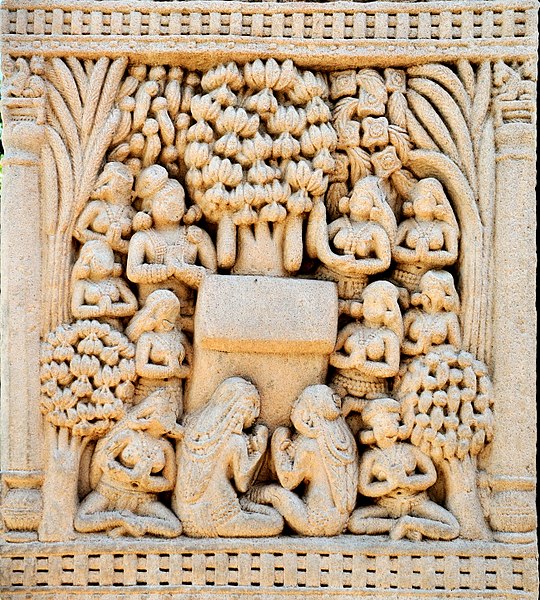The Nanda dynasty was the fifth ruling dynasty of Magadha in northern Indian subcontinent during the fourth century BCE and possibly also during the fifth century BCE. The Nandas overthrew the Shaishunaga dynasty, and expanded the empire to include a larger part of northern India. Ancient sources differ considerably regarding the names of the Nanda kings and the duration of their rule, but based on the Buddhist tradition recorded in the Mahāvaṃsa, they appear to have ruled during c. 345–322 BCE, although some theories date the start of their rule to fifth century BCE.
A silver coin of 1 karshapana of the Magadha Empire (ca 600–32 BCE), King Mahapadma Nanda or his sons (ca 346–321 BCE) Obv: different symbols Rev: different symbols including an elephant. Dimensions: 17 mm Weight: 2.5 g.
Magadha also called the Kingdom of Magadha or the Magadha Empire, was a kingdom and empire, and one of the sixteen Mahajanapadas, 'Great Kingdoms' of the Second Urbanization, based in southern Bihar in the eastern Ganges Plain, in Ancient India. Magadha was ruled by the Brihadratha dynasty, the Pradyota dynasty, the Haryanka dynasty, the Shaishunaga dynasty, the Nanda dynasty, the Mauryan dynasty, the Shunga dynasty and the Kanva dynasty. It lost much of its territory after being defeated by the Satavahanas of Deccan in 28 BC and was reduced to a small principality around Pataliputra. Under the Mauryas, Magadha became a pan-Indian empire, covering large swaths of the Indian subcontinent and Afghanistan.
Magadha empire under Kanva dynasty
Cyclopean Wall of Rajgir which encircled the former capital of Magadha, Rajgir. Amongst the oldest pieces of cyclopean masonry in the world
King Bimbisara visits the Bamboo Garden (Venuvana) in Rajagriha; artwork from Sanchi.
Magadha kingdom coin, c. 350 BCE, Karshapana





